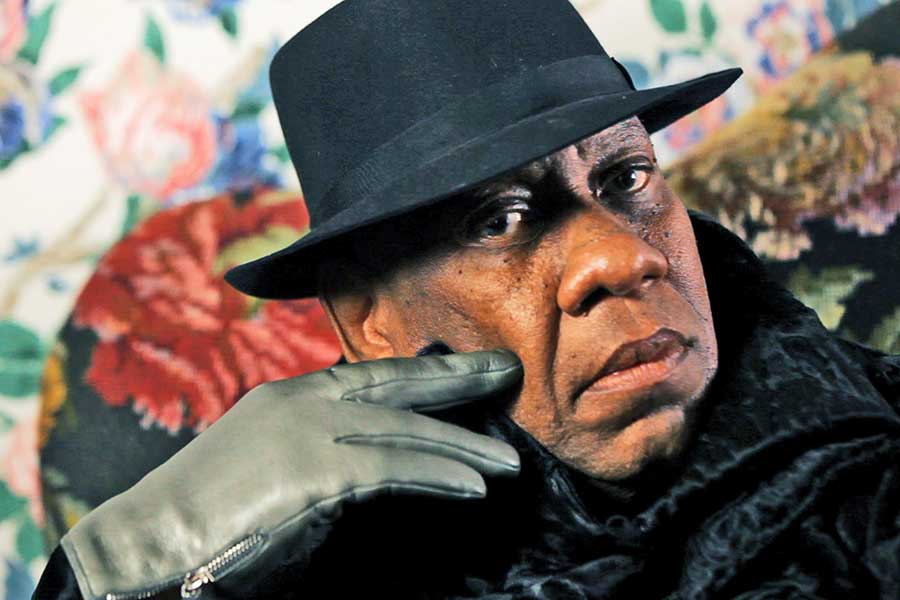Out gay fashion editor and writer André Leon Talley has an infectious personality that is on full display — along with his fabulous, inimitable style — in a rollicking documentary.
“The Gospel According to André,” which opens June 8 at the Landmark Ritz at the Bourse, profiles the style maven as he dispenses wisdom about life, fashion and beauty.
Director Kate Novack features dozens of fantastic photos of Talley that illustrate his passion for beauty and style. The tall, often-imposing writer wears his clothes, as iconic Vogue editor Anna Wintour suggests, “like armor.” He displays a proud and elegant mien, even when he is dressed in a mauve alligator coat and a turban — a fashion mistake, he admits in the film.
“The Gospel According to André” traces Talley’s life growing up in Durham, N.C., in the Jim Crow era. He was raised by his grandmother, who taught him cleanliness, discipline and responsibility — three qualities echoed by his mentor, Diana Vreeland. Talley came to understand the culture of the South, the importance of church and wearing one’s Sunday best, and his place in that world.
But he also escaped from it by reading Vogue. He was especially enchanted by the African-American models in the magazine’s glamorous pages.
Talley was a flamboyant presence in school, recalling he was “inspired by people who dared to be daring.” He also appreciated Barbra Streisand’s “Second Hand Rose,” which encouraged Talley to find high style in thrift stores. Although “The Gospel According to André” features its subject enthusing about the drama of wearing capes, one of his signature looks, there is perhaps too little discussion of his penchant for caftans.
Throughout the documentary, Talley is venerated for forging an unlikely path, becoming “so many things he wasn’t supposed to be,” according to one interviewee. The narrator explains how he attended Brown University, majoring in French studies, and learned who he was by interacting with and chronicling students from the Rhode Island School of Design who staged fashion shows at night. These episodes pulse with excitement as Talley’s outsized personality was forming.
But if Novak raises points about black-masculine identity, her film does not delve into them very deeply. Instead, the issues of race and sexuality adorn the film like a veil.
It was after college in 1974 when Talley moved to New York City and took a job at the Metropolitan Museum of Art, where he met Diana Vreeland and became her assistant. Talley recounts the anecdote with his abundant charisma, and even viewers who know the story will hang on to every word.
It was a professional match that took Talley to now-defunct Interview magazine, where he answered phones. He eventually wrote a story on Karl Lagerfeld, who became an instant and lifelong friend. Talley danced at Studio 54 and insists he did not take part in the club’s decadence. In 1978, he covered runways in Paris as a writer for Women’s Wear Daily and proved himself worthy of his job, even as he encountered racism and hostility along the way.
In the film’s more-serious moments, Talley discusses some of the hateful remarks that have been said about him — being called “Queen Kong,” for example — and he even sheds some tears. Yet he responds to his detractors with class, refusing to acknowledge the comments (or even disclose who said what). These moments reveals Talley to be the elegant gentleman he is.
Likewise, when Talley blogs about Melania Trump’s inauguration dress, he realizes that he will likely be hated for his commentary, but this scene shows Talley’s commitment to his work and being unbiased in his assessments, regardless of the subject.
Novack, meanwhile, is needlessly focused on the 2016 election, which comprises too much of the film’s last act. In contrast, Talley’s appreciation of the Obamas has far more impact and insight. Novack also includes observational segments about Talley’s dieting and efforts to lose weight, as well as his beauty regimens. These scenes feel superficial, as does an amusing but hardly insightful encounter with Isabella Rossellini, who brings pigs and a chicken when she visits Talley.
Better are the remarks about Talley’s importance from fashion designers and celebrities including Tom Ford, Marc Jacobs, Norma Kamali, Manolo Blahnik, Will.i.am and Whoopi, among others.
In one of the more poignant vignettes, Talley admits his regret in not having a love life, saying that it may be his greatest flaw. This confession emphasizes his commitment to his career first, but his wistfulness bristles. Significantly, Talley’s coming-out is not addressed, but only hinted at when his grandmother insists he come home one Christmas because she fears he is sleeping with Vreeland. n

